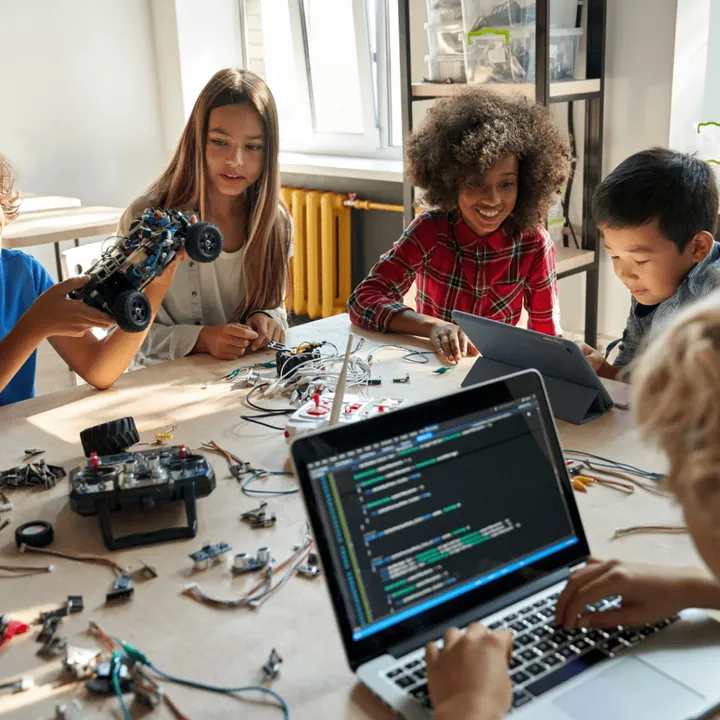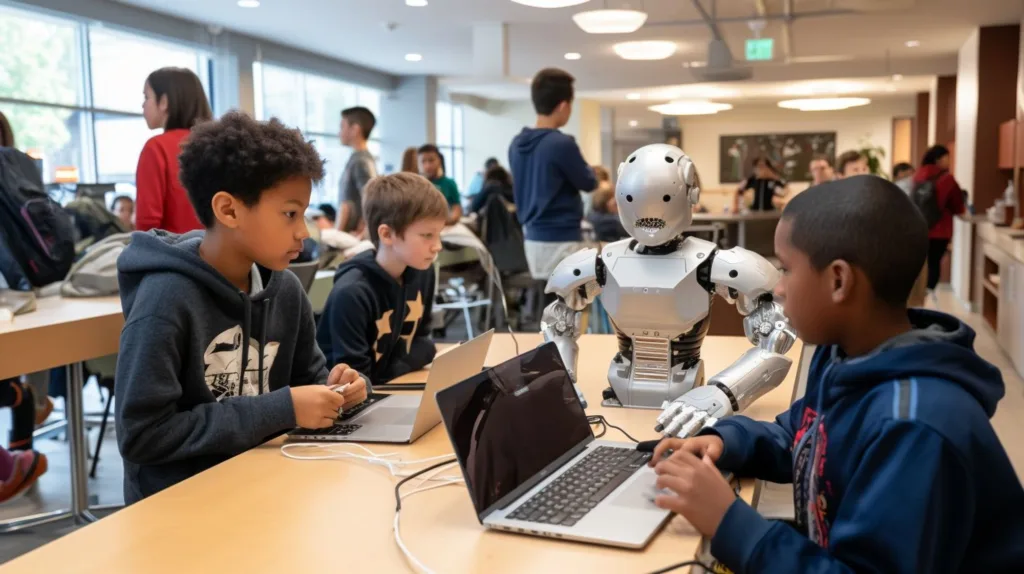Artificial Intelligence (AI) is reshaping education. From personalized learning paths to automated grading systems, AI offers teachers powerful tools to enhance student engagement and improve outcomes.
In this guide, we'll explore how you can incorporate AI into your daily teaching practice in practical, ethical, and impactful ways.
Key Takeaways
- AI enables personalized instruction tailored to each student's needs.
- Teachers can streamline lesson planning and grading with AI tools.
- Students benefit from timely support and feedback powered by intelligent systems.
- Ethical implementation of AI builds trust and develops essential 21st-century skills.
Implementing AI in Education

Integrating AI in education begins with understanding its benefits and identifying real-world classroom applications.
Benefits for Students and Teachers
- Individualized learning paths: AI adapts content to match each student's pace and ability.
- Access to quality resources: AI bridges geographic and economic gaps in education.
- Continuous assessment: Teachers can track progress in real-time and intervene early.
- Efficient content creation: Bite-sized learning materials boost comprehension and retention.
- Automated feedback and grading: AI provides consistent, objective evaluations.
- Reduced workload: Teachers gain more time for high-impact student interactions.
Real-World AI Use in the Classroom
- Machine learning helps educators tailor lessons to individual learning styles.
- Intelligent tutoring systems offer support outside class hours.
- Virtual assistants automate administrative tasks like scheduling or grading.
- Natural language processing enables cross-language learning.
- Adaptive platforms analyze performance and adjust future lessons accordingly.
These tools foster inclusive, student-centered classrooms where learning is more accessible and engaging.
Addressing Concerns and Ethics in AI Adoption
Plagiarism and Academic Integrity
AI-generated content can raise concerns around originality. Teachers must:
- Educate students on intellectual property and academic honesty.
- Set clear policies on the acceptable use of AI tools.
- Emphasize the importance of critical thinking over content generation.

Privacy and Data Ethics
As AI collects and analyzes student data, ethical use becomes critical:
- Ensure platforms comply with privacy standards and regulations.
- Be transparent about data use and storage practices.
- Involve students and parents in consent and disclosure processes.
Creating an Ethical Framework
Schools and developers must:
- Establish clear guidelines for AI use.
- Promote responsible, bias-free application.
- Regularly review and update ethical policies.
Collaborative oversight helps ensure AI enhances—not undermines—the learning process.
Practical Applications of AI in Teaching

Lesson Planning and Content Creation
AI tools suggest resources and generate lesson ideas based on curriculum goals. Examples include:
- Automating the creation of differentiated activities.
- Generating quizzes aligned with learning standards.
- Recommending materials for student skill levels.
Differentiated Instruction
AI supports individualized learning by:
- Adapting content in real-time to student performance.
- Recommending targeted resources for struggling learners.
- Automating the design of personalized assignments or worksheets.
Grading and Assessment
AI improves evaluation by:
- Providing instant, data-driven feedback.
- Reducing grading bias with consistent automated scoring.
- Analyzing performance trends to inform instruction.
- Assessing written work using natural language processing tools.
Personalized Tutoring
AI-powered tutoring systems offer:
- Custom learning pathways based on individual strengths and gaps.
- Adaptive feedback that supports students at their own pace.
- Clarification of complex concepts through AI-led explanations.
- Opportunities for ongoing self-assessment and goal tracking.
Embracing AI: A Practical Mindset for Teachers
Be Future-Focused
Teachers who embrace innovation stay ahead of educational shifts. This includes:
- Staying informed about AI developments.
- Exploring tools critically—not just using them because they exist.
- Integrating AI where it enhances—not replaces—human teaching.
Involve Students in the Conversation
Encourage student input to develop AI literacy:
- Lead classroom discussions on AI ethics and use.
- Assign projects on how AI impacts various industries.
- Empower students to ask critical questions about technology.
Use AI as a Supplement, Not a Substitute
AI is a tool to support—not replace—educators. Its purpose is to:
- Automate repetitive tasks.
- Provide real-time insights.
- Free teachers for more one-on-one engagement.
Human connection, empathy, and mentorship remain central to effective teaching.
Conclusion
AI holds tremendous potential to personalize learning, streamline teaching, and empower students. But its true value lies in how thoughtfully it's implemented.
Educators who understand AI’s possibilities—and its limitations—can create dynamic, inclusive classrooms where every learner thrives. By combining technology with ethical practices and professional intuition, we can make AI a cornerstone of future-ready education.
Let’s harness AI to support—not overshadow—human teaching, and help shape classrooms that are smarter, fairer, and more engaging for all.



